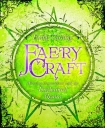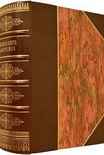Faery Craft: Weaving Connections with the Enchanted Realm Carding, Emily (first color ebook reader txt) 📖

Book online «Faery Craft: Weaving Connections with the Enchanted Realm Carding, Emily (first color ebook reader txt) 📖». Author Carding, Emily
The next thing was when I moved to Dartmoor and I experienced nature—rocks and trees and roots and earth—and I realised that I didn’t want to be a normal landscape painter, I wanted to paint the landscape that was the inner landscape. I wanted to know what it looked like on the inside, and once I felt that, then I started to paint trolls and faeries.
I discovered faeries really by making it up, by trying to imagine what it was…but it was always about feeling. So I brought all my skills as an artist to bear on trying to get the form and shape of what I was painting to feel like something that was elusive and invisible. Then I did various pictures, paintings, bits of books, and then the book, the Faeries book. Alan Lee and myself just tumbled into it, just went for it. We did research, we were both enthusiastic about English, Irish, and Scottish folklore, and we just worked from the descriptions that people had given over the years and drew it.
I think because we did it with passion and insight, we were getting it right, and people really responded to it. But it was only really years later when I embarked upon another book, called Good Faeries/Bad Faeries, which was more about my inner worldview of faeries, more about how I was feeling about them, and it was more of a spiritual thing, and again I did it really through intuition. It’s really only when that was finished and I was on tour with the book and signing the book, I started to spontaneously experience faeries on the streets of America!
W: That’s the book you have to write, that’s the book I want you to write someday! It is amazing, the story.
B: It is a rare thing for me to have those spontaneous Faery experiences, but they are real.
So really you are translating a feeling into a visual interpretation, which creates that same feeling in the viewer, creating a bridge in that way?
W: Very much so, they are a bridge to the otherworld, or a doorway, a gateway. Very often with our work, people will look at it and they will have a very emotional response when they experience it. It’s something about “coming home.” It’s something about going to a place that they forgot they knew so well. That’s wonderful.
How well do think you’ve portrayed you feelings or your vision of the otherworld—how close do you think you’ve got?
W: I don’t think it’s anything like what they really are, only how they appear. Sometimes I think they do look like that, but usually they are energy. It’s impossible, I think, especially in three dimensions, it’s impossible to capture it because so much of it is the energy, and you can’t really sculpt that.
Wendy Froud, “Autumn”
B: Well, I think I’ve got nowhere near! After all these years I haven’t got anywhere near, but I keep trying. People want to believe what I’m showing them is real, and they go, “Oh, that’s how they look, isn’t it?” and I say, “Well, actually, no. It’s how they feel.” You’ve got to bring people to some place where they can understand and feel it, and also that is a genuine opening, a genuine gateway to the reality—not only to the wider reality but to that specific or particular personality.
A genuine experience of Faery seems to be clear whilst it’s happening, but afterwards it’s impossible to express. It seems vague because so many different aspects come to bear in that experience, it isn’t just a visual thing, it’s an “other” thing—an other thing of otherness! The problem is when you try to express any of this stuff, everything fails. Words fail, pictures fail, everything is failing in one of the most astonishing and beautiful events. So to do what I do is trying to do the impossible, but I believe in it passionately.
Often the paintings are either doorways or, in the more complex ones, maps. They’re maps into Faeryland that you explore and you follow shapes. Shapes are very important in what I do because it’s the abstractions. I put geometry in so when you look at one of the pictures it isn’t just surface, it’s something that happens underneath that propels you not just deep into Faeryland but out into the cosmos. What I try to do is something mystical.
Faery art in particular needs to be expressive of—well, of Faery! People have a preconceived idea of what they should be, and they don’t like anything that challenges that idea. But the idea is incredibly recent, faeries have been with us forever and been part of our spiritual life as well as part of our cultural life.
I’ve been thinking of this a lot—obviously with my own work, thinking about the journey of our relationship with Faery—and it seems to me that it all changed around the Industrial Revolution. There’s this idea of trying to tame nature, and that’s perhaps when we started trying to tame faeries too…
B: I haven’t got an answer to that, that really fascinates me. It does seem to me that the Industrial Revolution is a bit of a watershed. There is lots of folklore evidence of faeries and Faery creatures that are in the country in that period, but not any evidence of them being in the cotton mills, for instance, and there should be. Did people, as they moved from the country, bring spirits with them or not? They don’t seem to, or it’s been hidden. They don’t seem to show up in the industrial landscape.
W: Too much iron…
Wendy Froud,





Comments (0)